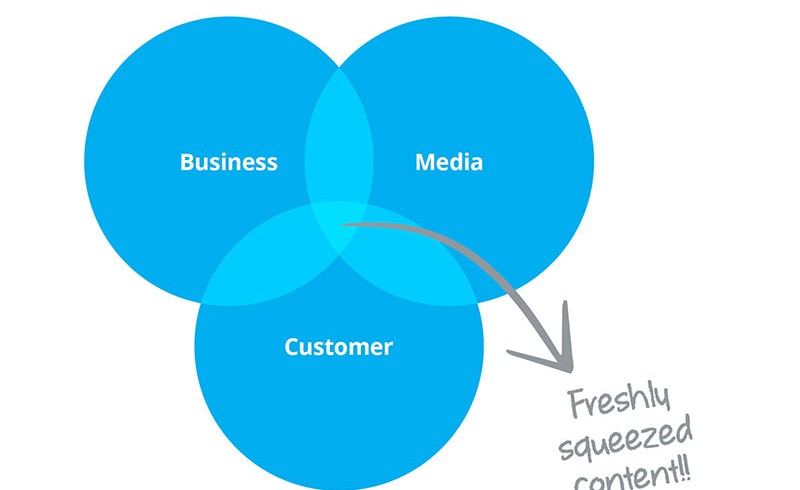
It’s never easy writing an article about… well, writing. I’ve always found it a bit embarrassing – being a writer myself – mostly because sooner or later people realise you’re not a reclusive genius at all, you’re just a reclusive wanker.
I especially find it difficult talking to digital marketers about the importance of quality website content, or ‘blogging’, because blogging is for prepubescents with unlikable tastes and even less likeable personalities. At least that’s the way it seems to most people.
If your website is the shopwindow for your products and services, content is everything else a shop needs in order to stay relevant on the high street; marketing, customer service, brand communication – everything!
The internet is no longer just for pragmatic users, anybody can connect with your business online if they feel like it. Moreover, browsing behaviours have changed alongside the advance in mobile technology; people expect to be engaged as well as informed.
Fresh, interesting and insightful content has become an expectation to your website visitors. This is something Google understands – for all intents and purposes, Google represent the definitive example when it comes to the search engines – and have taken this onboard in their endeavour to provide useful, relevant and pleasurable user experiences.
Most people will already know about Google’s Panda update, as well as their more recent mobile-friendly update, ensuring websites produce high-quality content that can be viewed across all devices. What may have slipped under the radar of even the most tech-savvy digital marketer is Google Phantom (aptly named), which was unleashed at the of May this year.
In essence, Phantom is another quality update. How Google assesses quality is sometimes a mystery, but it seems the key here is analysing user-behaviour once they arrive on a website to determine its usefulness. This again is where the quality of your content comes into play, as the more engaging your content is, the longer, and more regularly, visitors will stay and interact with your website.
There’s no set formula for writing content that works, that would be like saying writing a successful novel is as easy as following a set of simple rules. But there plenty of things you can do in order to ensure the content you do create hits the right mark.
From sourcing ideas to best-writing-practices, we’ve put together a few things to consider when coming up with quality content:
Relevance is good, but outside interest is even better
Most marketers struggle when finding topics to write about, so they fall back on delivering content that is tightly focused on their product or industry. Yes, relevance is important, but your website visitors have a broad spectrum of interests you can write about.
Original content comes from writing for your target demographic, whilst thinking about what’s going on in business and popular culture. The trick is bringing these elements together to come up with something creative and dynamic.
What’s your tone?
You might not think tone of voice is particularly important to your writing, but the manner in which your point comes across – whether it’s friendly, relaxed, assertive – is reflective of your brand.
Best practice dictates that most pieces of content, whether that’s business to customer or business to business, should be written how you speak, as this is what most readers are receptive towards. So long as spelling and grammar is correct, it doesn’t matter how casual your writing is at times.
Speaking of grammar…
The statement above demonstrates how rules regarding correct grammar, widely accepted as unbreakable, aren’t in fact absolute. We’re told from a very young age never to start sentences with conjunctions, but this is simply to prevent us from getting into the habit of writing fractured statements (ask any teacher now you’re all grown up and they will tell you!).
Publishing and promotion
After all that hard work spend writing, it’s important to effectively publish and promote your content in order to get the best results.
Best practice dictates that you should publish no less than one post per month, for the sake of Goggle’s algorithm determining website quality according to regular content updates.
However, this is the bare minimum and audiences will expect varying levels of engagement depending on the nature of your website.If your site and related affiliate promotions are of a higher profile news-wise, such as tech for example, then your target market will expect more regular and up-to-date content.
There are other places to publish new content besides your website, although your website should take priority, and these include LinkedIn and relevant third-party sites. The good thing about varying publishing platforms is that it allows you to reach larger, different audiences. Just make sure not to duplicate content by publishing the same article.
Reaching out to different audiences helps to amplify your brand message and subsequent offerings, especially across platforms like LinkedIn and Facebook. So be sure to publish new content alongside notifications across social media.